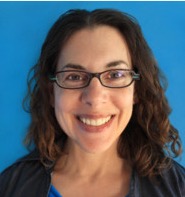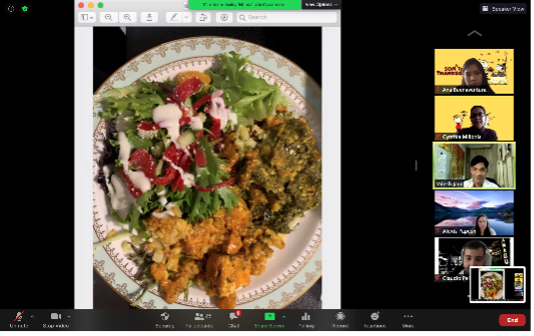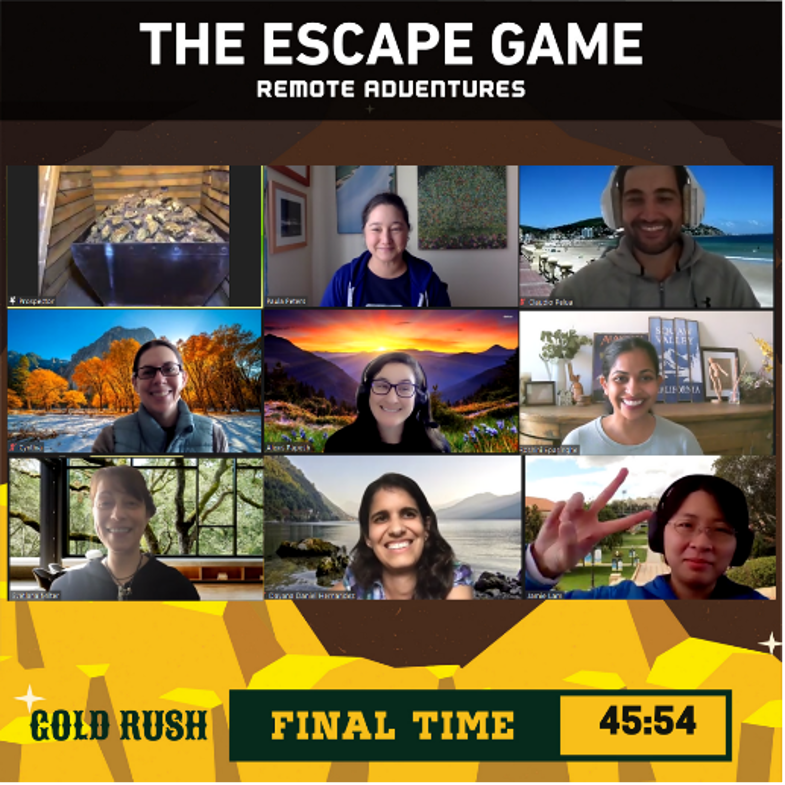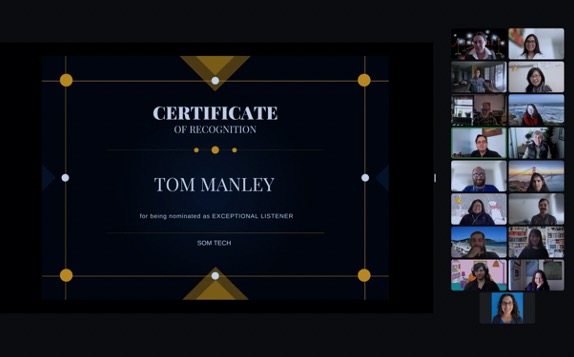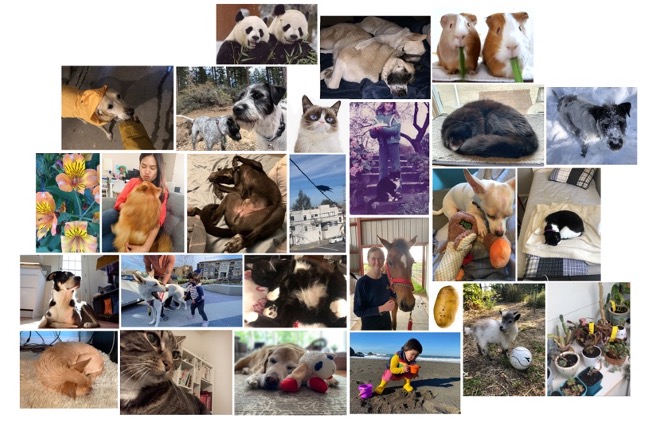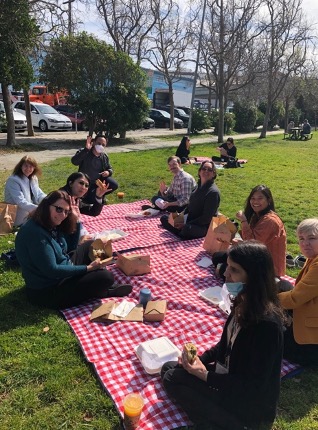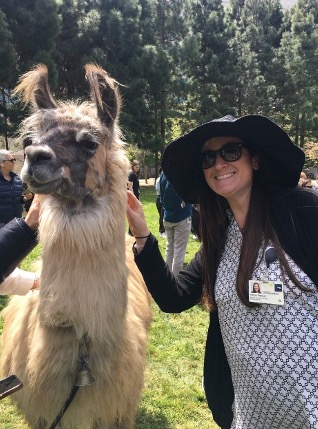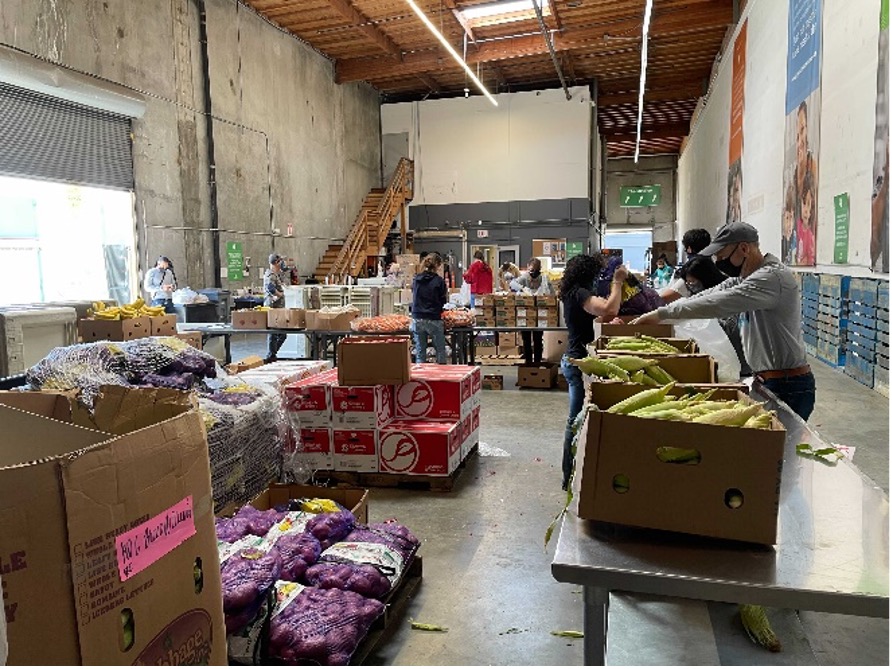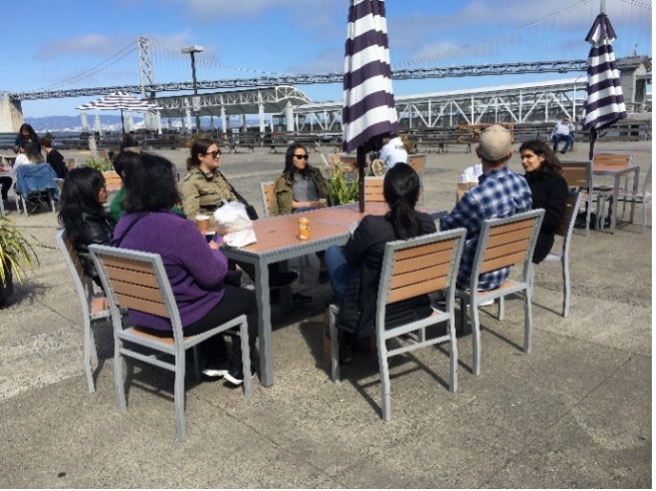By Cynthia Milionis. At the start of the pandemic, some residents of San Francisco shared baggies of sourdough starter by attaching them to street poles. This gesture of good will presented an opportunity for some to make bread for the first time, and, for others, an exercise in trusting a gift from people completely unknown to them. Interestingly, to those of us who care deeply about organizational culture, is the fact that sour dough is based on a culture of lactic acid and yeast, and is fed with only two simple ingredients – flour and water. If properly tended, by being used and restored regularly, it can keep growing and doing its job of making delicious baked goods rise beautifully and taste absolutely delicious for years and decades to come.
The gold miners who settled California were known for using this method to make their bread because it was low-cost, transportable across the state….and easily shared with others. Much like Boudin Bakery, our department, the UCSF School of Medicine Dean’s Office, Technology Services (aka UCSF SOM Tech), has had the same starter for years. We are made of about 26 employees. Many of us have been here a long time and recognize it can be challenging for someone stepping into this group to grasp established norms. So how do we keep things fresh, incorporate newbies, and nourish each other? We enjoyed presenting on this topic last week at the UC Tech conference, and hope to share it here in order to continue the dialogue regarding best-practices in establishing a great work culture.
As much an art as a science, our recipe includes empathy, creativity, a watchful eye, and a dash of data.
The data
In 2017, our Gallup score (which measures employee engagement on a scale from 1 to 5) was 3.88. We looked at the survey results in details and found opportunities for improvement, starting with articulating a shared purpose. This was particularly important to our team because we rely heavily on collaboration for our work in technology innovation and decision-making. Good communication and the ability to work well together are key. As part of our process to articulate a shared purpose, we exchanged stories, developed rituals, and conducted team-building exercises. Did our efforts to strengthen our collaboration skills drop when we were consigned to home offices for two years? No, they continued to rise, as our team had begun focusing on this in 2017. Further, during that time, our Gallup score grew to 4.39. We have come back into the office (hybrid) as strong as ever because we put people first.
What specific steps enabled this success? A critical first step was leadership support. Our leaders created a culture committee, providing staff dedicated time to plan and facilitate ways to foster engagement. This committee then planned social gatherings, a volunteer program, onboarding process redesign, support of department initiatives such inclusion, diversity, equity, and accessibility (IDEA) training, and efforts to advance professional growth. These actions have been the secret sauce that keeps everyone coming back for more.
The Social Remote: Staying Engaged
While remote, the social committee frequently held optional events to maintain engagement including holiday celebrations with games and costume contests. One favorite was a holiday feast where staff was given a stipend to purchase a meal from a worthy local busines. The funds came from a Faculty/Staff Morale Grant won by Ana Buenaventura, culture committee member and SOM Tech colleague. While we ate together, people shared stories about why they supported that particular business. We also compiled a digital department recipe book, creating a space for individuals to share their unique cultural experiences around food and family.
We tapped into the group’s competitive spirit by holding a virtual gingerbread contest with sweet showstoppers assembled from reconstructed kits.
Our People’s Choice Award ceremony, tallied from anonymous voting, celebrated individual strengths.
Fortunate to have a trained instructor on staff, the committee promoted good health by hosting monthly stretch sessions online. And with the win of a UCSF Wellness Champions grant, participants received stretch equipment delivered to their homes.
Recognizing how animals and children were contributing positively to wellbeing, the committee hosted a play pals show-and-tell. (Also a very active Slack channel.)
Additional events included the popular virtual escape room, photo contest, remote meet-and-greets for new hires and fond farewell parties for those saying goodbye. To satiate an appetite for new places and voices, we scheduled virtual tours, such as a Berkeley Labs tour, and invited guest speakers, including co-founders from the UCSF Faces of Ability campaign.
During quiet periods of minimal COVID risk we scheduled small outdoor group meetups in the Bay Area and Uruguay for our remote team.
The Social Hybrid: Return to the Office
So how was our transition to a hybrid work model?
The committee knew reentry was going to be challenging. Staff had demonstrated the ability to successfully work remotely. For those comfortable at home alone, dreading a commute, and/or concerned about safety, the reason for return was questioned.
To ease into it, we gathered outdoors on a neighboring green with picnic blankets (available anytime for outdoor meetings and meals) to welcome everyone back. Management shared gift cards to local restaurants to encourage casual socializing and reorientation to our neighborhood. We provided on-site stretch equipment, and the group leveraged UCSF’s Recess Time by visiting llamas (with superpowers) on campus.
These efforts, in hand with the flexibility management demonstrated to address individual needs, listen to feedback, and treat each week as an experiment, allowed us to focus on in-person collaboration and casually connecting vs. cubicle isolation.
A Good Turn: Volunteering
We recognized our privilege to be working from home while frontline colleagues were performing under extremely difficult circumstances. We were grateful for steady employment, housing, and healthcare. In his 2018 UCSF State of the University address, UCSF Chancellor Sam Hawgood said we have a “social and moral responsibility” to connect with and be involved in the community. Heeding this prompt, the culture committee started a volunteer program and set the groundwork by surveying interest and asking people where they wanted to create positive change. We researched and scheduled group opportunities with most focusing on food insecurity in the community. Participants showed enthusiasm and the desire to continue involvement on a regular basis. This inspired a collection of stories about volunteer experiences with the hope of encouraging broader engagement. (@collectivegoodproject on Instagram)
“Sometimes you want the satisfaction of being able to do something that has an obvious, immediate, direct impact, even though it’s a small one. A person getting free food that day is important.”
– Laurie
At The Start – The Onboarding Process
Nurturing people is a big investment. Ideally they stay, contribute individual experiences and perspectives and grow. What better way to set people up for success than using a natural leavening agent – our “starter” – at the very start.
We conducted a discovery effort to identify where we could improve our existing onboarding process. This consisted of interviews, review of existing onboarding methods, and secondary research. Based on findings, we proposed new approaches to improve the new hire experience:
- Give new hires a welcome kit with a team welcome message, swag, and a list of what they can expect the first week
- Conduct a welcome tour, on-site or remote
- Use pre-boarding and onboarding checklists for guidance
- Provide a cheat sheet of useful hints/contacts that covers logistics and cultural norms
- Hold an all-department meet-and-greet
- Introduce a buddy program to leverage social interactions between new hires and long-time employees.
Learning Culture
We have a long history of lunch and learns and educational huddles. Many of our team members have been trained in inclusion, diversity, equity, and accessibility (IDEA), and we have designed a collaboration toolkit that incorporates IDEA best practices. In addition, we created an internal mentorship program for those being mentored to upskill and for their mentors to practice clear communication and leadership. We attribute a lot of our success to the fact that SOM Tech has created an ecosystem of initiatives that work together.
Having a seasoned staff means we have a wealth of knowledge to share. To retain talented employees, we provide opportunities for growth and celebrate accomplishments. We rely on one another for successful collaboration with our successes and failures intertwined.
Food for Thought: Gathering Feedback
When the last UCSF Gallup survey went out, the culture committee also circulated a culture survey to better understand what staff would like from future events and learning opportunities. A success in itself, both surveys had 100% participation rate. Listening to what people want, need, and checking frequently on the department from a number of perspectives has provided essential direction. These practices have informed quick pivots, as needed. For example, certain activities might feel like homework whereas others receive a fair amount of engagement.
It’s a collective effort that takes planning, consideration and budgeting by the culture committee, commitment from staff to be present and engaged, and value recognition and funding allocation from leadership. The entire team needs the bandwidth to participate in non-work-specific activities, none of which is possible without the buy-in of leadership, and the willingness of all to experiment and be creative. We have learned that this program, defined by the act of proactively nuturing organizational culture using some of the methods described here, will help us navigate the challenges ahead and rise together, not unlike a great loaf of sour dough bread. It’s vital that we “back” one another – support each individual’s growth, development, and wellbeing, and understand that we each contribute to our collective succes. This is one way to make it happen.
